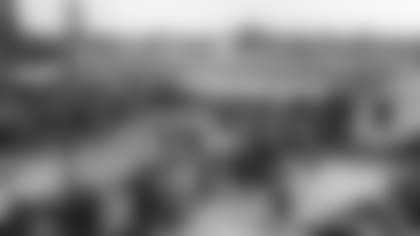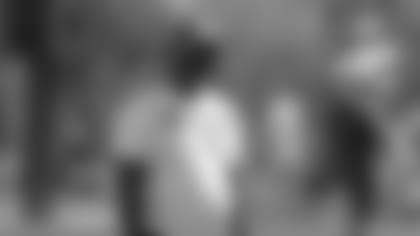
GREEN BAY—At first glance, the two pictures on this page might look nearly identical – or as though they were taken of the same ballpark, at least.
In truth, both pictures were taken in Hagemeister Park, the original home of the Packers, but they are of two different ballparks and were shot in two different years.
First, some background. The Packers played at Hagemeister Park, currently the site of Green Bay East High School and City Stadium, from 1919 through 1922. In 1919, they played on an open field. There was no fence or seating. The old minor league baseball park that had doubled as a football grounds was torn down in the spring of 1918, much to the chagrin of the local sporting crowd.
Its members howled that it was a disgrace a city the size of Green Bay didn't have an adequate ballpark.
 |
| C.M. "Neil" Murphy |
Clearly, the Packers were lucky to survive their first season without one and their second season might have hung in the balance had something not been done about it. Fortunately, C.M. "Neil" Murphy, a local typewriter salesman, was named business manager of the Packers in July of 1920 and began the push to build a fence around the playing field at Hagemeister so the Packers could charge admission.
Roughly six weeks later, construction on the fence began. In late September, workers began painting signs on the fence. In mid-October, three games into the season, wooden bleachers holding 700 fans were constructed on the north side of the field. A week later, with a big crowd expected for a game against De Pere, more stands, seating roughly 800, were erected on the south side of the field.
The top picture is almost certainly that ballpark. The Neville Public Museum of Brown County has the photo in its collection, but not an accurate caption.
The evidence – or proof – that it was the 1920 ballpark can be found in the Council Meats sign on the fence and the bleachers on each side. Council Meats was Indian Packing's brand, and Indian Packing sponsored the Packers for only their first two seasons. What's more, the bleachers fit the description of what was written in the Green Bay Press-Gazette about the construction and number of seats.
But here was the kicker. The lease signed by the Hagemeister Realty Co., owner of the property, and Murphy required the fence be taken down at the end of the season and the lumber be returned to the Indian Packing Plant.
Those terms were carried out in early December and shortly thereafter Acme Packing purchased Indian Packing.
In early 1921, Green Bay was granted a franchise in the Lake Shore League, an amateur or semipro baseball circuit. But one requirement was that it have a ballpark with a fence and grandstands.
Acme Packing agreed to give back the lumber to rebuild the ballpark and construction began in mid-April at the same spot in Hagemeister, where the previous year's ballpark stood. But this time plans called for a grandstand seating 1,100 and bleachers seating 700.
The ballpark was all but completed in two weeks – in time for the start of the baseball season.
The Packers were admitted to what is now the NFL in August of 1921 and the capacity of the park was enlarged to 3,600 with both bleacher and grandstand seating. The seats along the sidelines stretched between the 20-yard lines on both sides of the field.
This time the ballpark remained standing for two seasons or until construction began on East High School in 1923.
The Neville collection identifies the picture below as a September 1922 game, which if accurate means it would have been a non-league game played against Duluth.
The Canned Meats sign – with the Red Crown and Council products highlighted on each side – supports that it had to be a 1921 or '22 game. When Acme purchased Indian, it announced it would continue to produce its own Red Crown brand, as well as Indian's Council brand.
Plus, there's a covered grandstand that's visible above the sign, a feature the 1921-'22 ballpark had that the 1920 version didn't.















